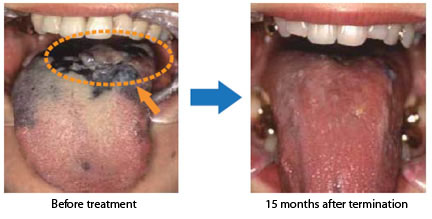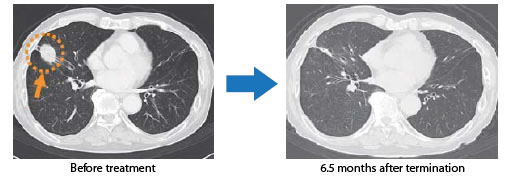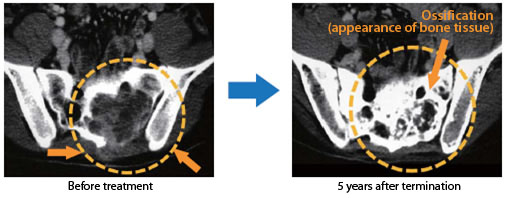
- Present status and actual results
- Effectiveness of cancer therapy for each site
Effectiveness of cancer therapy for each site
Bone and soft tissue tumors are most favorable
Treatment results: Cancers for which effectiveness has been confirmed
Clinical research at QST Hospital has confirmed effectiveness against the following site-specific cancers.
https://www.nirs.qst.go.jp/hospital/radiotherapy/explanation
Head and neck cancer (including ocular)
Local control is favorable. The local control rate is particularly high (70% to 80%) for adenocarcinoma, adenoid cystic carcinoma, and malignant melanoma (see Series 27).
[Malignant melanoma] Radiation dose: 57.6 GyE; irradiation fractions: 16; treatment period: 4 weeks.

Skull base tumors
"Skull base tumors" is a general term for tumors occurring in the base of the skull. Chordoma and chondrosarcoma were mainly targeted in the clinical research. Surgical resection is very risky, and produces poor therapeutic results. The local control rate after five years was approximately 80% for patients treated with the finally established radiation dose.
Lung cancer (non-small-cell lung cancer)
Heavy ion irradiation is conducted only once in heavy ion radiotherapy on peripheral non-small cell cancer I. This is reaching the level of irradiation referred to as radio-surgery (see Series 28).
[Lung cancer] Irradiation fraction: 1; treatment period: 1 day.

Hepatocellular carcinoma
Hepatoma accounts for the majority of primary hepatic cancers. Because of its unique biological and physical characteristics, heavy ion radiotherapy is expected to be a minimally invasive new therapy for the treatment of hepatoma (see Series 29).
Prostate cancer
The five-year survival rate was 91.6%, the cause-specific survival rate was 98.5%, and the five-year local control rate was 99.1%. The biochemical non-recurrence rate with no PSA re-increase after treatment showed an extremely high probability of 83% (see Series 31). These results indicate that the survival rate is 10% to 15% higher than that for a combination of X-ray therapy and hormone therapy.
Bone and soft tissue tumors
Bone and soft tissue tumors are among the most favorable indications of heavy ion radiotherapy, although they are usually radioresistant. The three- and five-year local control rates were 70% and 58%. The five-year survival rate was 33% for 78 patients with osteosarcomas in the pelvis or vertebra that were difficult to resect. After treatment, many patients maintain a quality of life level equal to or higher than that before treatment. Heavy ion radiotherapy is one of new choices for treating bone and soft tissue cancers that cannot be removed by surgical operations (see Series 30).
[Osteosarcoma in the sacrum] Radiation dose: 52.8 GyE; irradiation fractions: 16; treatment period: 4 weeks.

Rectal cancer (Postoperative recurrence in the pelvis)
The current treatment method (73.6 GyE/16 fractions) shows better results than radiotherapy alone. The local control rates are 92.1% after three years and 89.3% after five years. The three-year and five-year survival rates are 72.8% and 51.8%. Heavy ion radiotherapy to prevent the local recurrence of rectal cancer is expected to spread as a new minimally invasive, effective therapy (see Series 33).
[Reference data] National Institutes for Quantum and Radiological Science and Technology, National Institute of Radiological Sciences; Hirohiko Tsujii, et al. Radiological Sciences. 2007;50(7):4–19.














